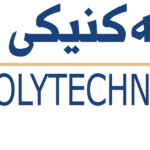- Salar Ismael Ahmed
- salar.ahmed@epu.edu.iq
- +9647504685776
- Salar Ismael Ahmed PhD Dissertation
-
ABSTRACT
The fifth generation (5G) mobile communication technology intends to address the massively increasing data rate requirements as well as the massive growth in traffic volume. The 5G technologies achieve higher performance, reduced latency, higher density, and higher mobility minus of sacrificing reliability. However, as the mobile core networks are facing exponential growth in traffic and computing demand as smart devices and mobile applications become more popular. One of the most promising solutions to the challenges is caching. Non-Orthogonal Multiple Access (NOMA) is one of the promising radio access techniques for performance enhancement in next-generation cellular communications. Especially the 5G networks are expected to provide a massively increased number of users at a thousand times higher data rates at lower power consumption because NOMA provides a higher spectral efficiency and higher system throughput. For more improvement, power domain (PD-NOMA), code domain (CD-NOMA) and cooperative (C- NOMA) techniques are proposed and implemented in the 5G to overcome the future network demands. The PD-NOMA, employs Successive Interference Cancellation (SIC) at the receiver and Superposition Coding (SC) at the transmitter.
The proposed systems implemented with the help of MATLAB and NYUSIM simulations. The results of simulation show that the proposed techniques meet the various needs of improved user fairness, quality-of-service (QoS), high reliability, high spectral efficiency, extensive connectivity, raising data rates, high flexibility, low transmission latency, massive connectivity, low delay, higher cell-edge throughput, and superior performance.
For more improvement, caching techniques, as a storing popular reusable information at intermediate nodes to reduce backhauling load in wireless
ii
networks, have been integrated with C-NOMA to reduce the delay of storing planned content needs, relieve backhaul traffic and to alleviate the delay caused by handovers. The results of simulation of caching integrated with C-NOMA technique have shown promise in maximizing throughput, minimizing latency, and optimizing resource efficiency. In C-NOMA, dynamic resource allocation refers to the process of dynamically modifying the power required to transmit rates and resource blocks allocated to users under their QoS requirements and channel conditions.
Finally, a novel approach is proposed by integrating C-NOMA, massive multiple-input multiple-output (m-MIMO) with caching as a strategic technique to overcome the exponential growth in data demand, spectrum scarcity, mitigation of interference, energy efficiency and sustainability. The simulation and evaluation results proved that the proposed system provides significantly a higher performance in terms of data rate, bit error rate (BER), and outage probability and reduces the power consumption to 52.6% and 54.7% compared to NOMA without cooperative and without NOMA, respectively, which is higher than the related works. The results of simulation verify the achievement of low-latency required by the sixth generation (6G) mobile communication networks cause to operate bandwidth-intensive applications such as high-definition video streaming, augmented reality, virtual reality, and Internet of Things (IoT) devices. - Erbil Technical Engineering College
- Information Systems Engineering
- electronics and Communication (5G and 6G)


